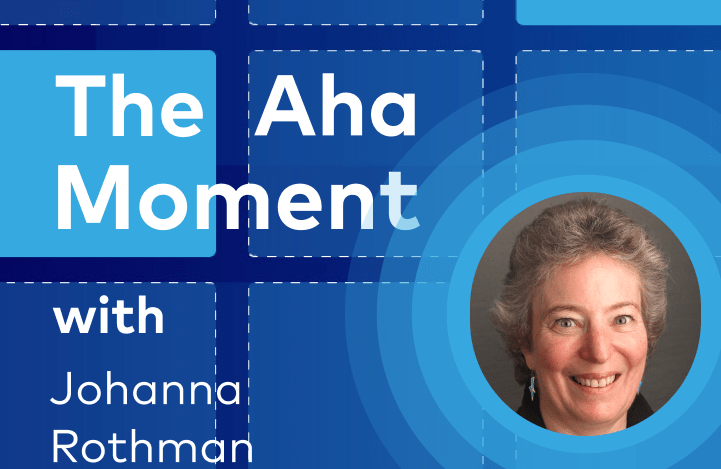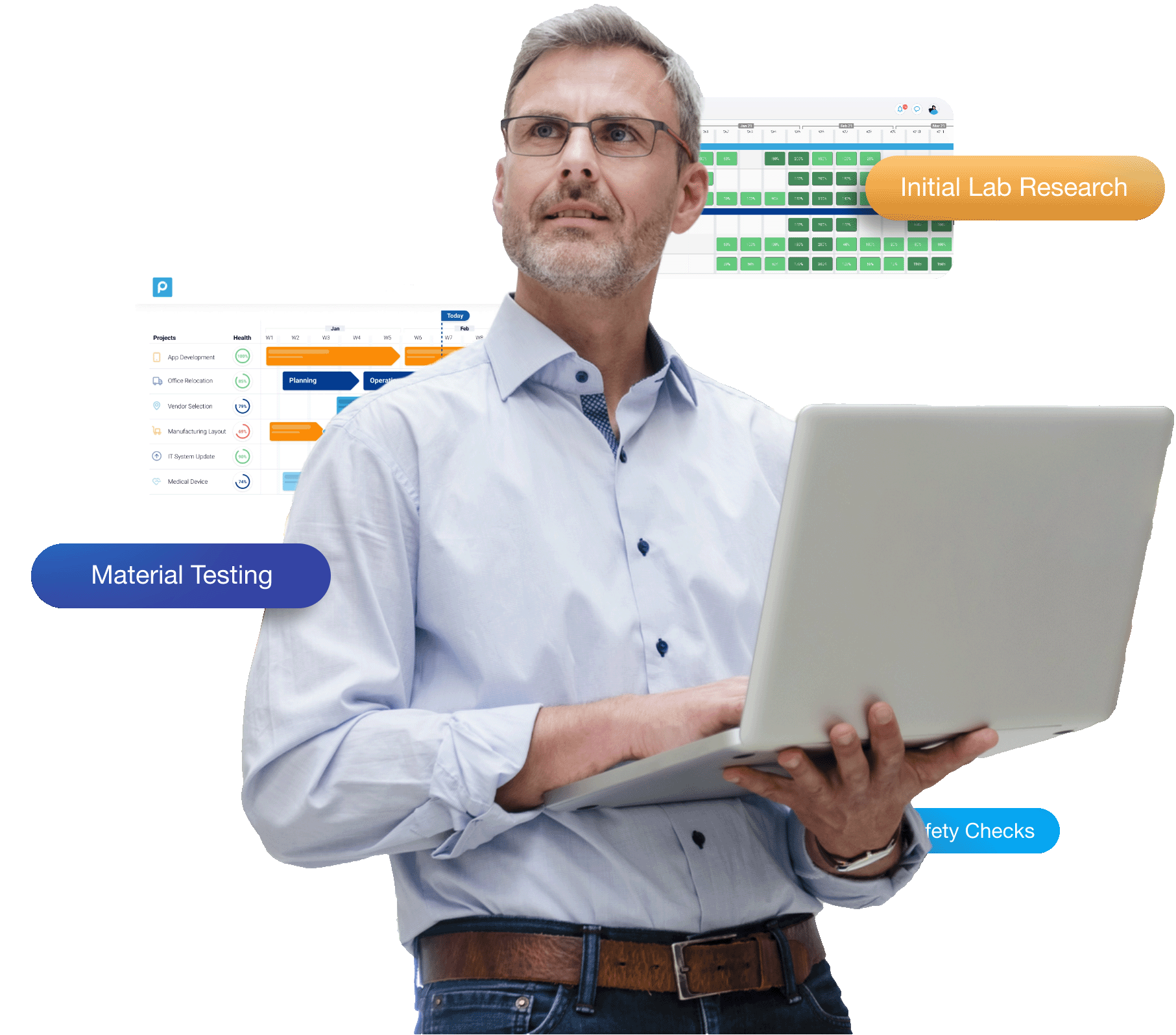PM Influencer Series: Johanna Rothman


In our series, The Aha Moment, we chat with influencers in the PM & PPM space and get to know them better. We ask a bunch of questions, some biz related and some not so biz related, in order to understand what makes them tick and find their aha moment.
This month’s feature is PMO expert Johanna Rothman. A fun fact about Johanna is that she manages a personal blog & newsletter where she shares insights on how to adapt to change, personally and professionally.
Professional Stuff…
Q: What is your current job title and which industry are you working in?
A: I am the owner and president of a boutique consultancy, Rothman Consulting Group, Inc. Primarily, I work with technically-focused organizations, to help them be more effective. Sometimes, that’s their Engineering or IT organizations. Recently, I’ve worked with senior leadership who use technology to enable their products and services.
Q: What led you to this career?
A: I started my professional career as a software developer. It didn’t take me long to realize too many projects were mired in anti-delivery thinking and actions. As a manager inside organizations, I worked to free the project teams from that kind of thinking. Then, I realized I worked “too fast” for my employers. I decided to become a consultant, because I could work with people when they were ready for my ideas. That’s worked out well.
Q: What is your biggest challenge in your profession? How do you overcome it?
A: Rampant multitasking. Managers multitask by design, but they need to decide sooner, rather than later. Because they don’t often have enough time to think, they delay on decisions. Because managers don’t make portfolio decisions (which projects to start/stop/transform), the teams are supposed to work on too many projects at one time. That leads to late releases, insufficient technical excellence, and all kinds of other bad outcomes.
People can work on multiple things in a week. However, they need to make each thing small and finish that thing, or get that thing to a reasonable stopping point, before they start on the next thing. That approach works with people at all levels. But they have to stop trying to do it all at one time.
I overcame this for myself and I’ve written several books and many articles and blog posts about managing our personal and organizational portfolios. I recommend my approach for organizations:
1. Decide on the most valuable thing you can do today. (Ignore sunk cost).
2. What’s the smallest piece of work you can do to move that thing forward? Make that small piece something you can complete in 90 minutes or less. In organizations, this often means you collaborate with a team. (That collaboration has implications for reward and recognition.)
3. When you finish that piece of work, decide if working on something else is more valuable. Always use value to decide.
4. Keep going.
This is the idea behind all project portfolio management and preventing the multitasking.
Q: In your experience, why do projects fail or fail to meet their deadlines?
A: Let’s assume the deadline is reasonable. Now, what’s the effect of all this multitasking on deadlines?
Multitasking is the fastest way to get nothing done. Deadlines mean nothing if you’re supposed to work on several projects at once. No one can estimate well with multitasking, because you don’t know when your team members are available to collaborate with you. That’s at every level of the organization.
If you need other people to work (project team) or to decide (management), and you don’t have access to them, how can you make progress? You can’t.
There are many other reasons for failing to meet deadlines, but in my experience, it’s not technical risks. It’s not having people available when you need to work with them.
Q. What advice would you give up and coming professionals like yourself?
A. If you are a relatively new project manager, read anything you can about limiting WIP, Work in Progress. You might start with the ProKanban guides, but you don’t have to use kanban to limit WIP. And remember, your role as a project manager is to support the team in how they manage their work. Your job is to support the team.
Q. Do you have a daily routine at work? If so, what is it?
A. My daily routine is:
– Start work around 9. Write for a while. Then do social media and more client work/writing/content development.
– Take a break about 10:30 and walk.
– About 11, return to work, more client work/writing/content.
– About 12:30-11, break for lunch and more walking.
– Return to work around 3. Make sure to walk at some point in the afternoon, and a 90-minute block of work.
– Finish work around 6-6:30, depending on whether I’m making dinner or my husband is.
Q. If there was one activity you could remove from your daily routine what would it be and why?
A. It would be checking social media. Don’t get me wrong—I like connecting with other humans online. I don’t like the political nonsense, and I can’t figure out how to eliminate that from my feed.
Now for the Fun Stuff….
Q: Have you read any books, articles or other resources that changed your perspective on project management?
A: I’m reading two books right now: Jim Benson’s “The Collaboration Equation” and Alan Weiss’ “Sentient Strategy”. We all need to collaborate better. And we all need to refine and adapt our strategy—at every level of the organization,continously.
Q: If you had a magic wand, what’s the one thing you would change about Gantt?
A: I don’t need a magic wand. I never use Gantt charts. Never. At best, they reflect the state of last week’s plans, not this week’s risks, nor next week’s plans. If they do reflect the state of next week’s plans, you probably don’t need a project manager, because things aren’t changing very much. That means you don’t have a lot of risks.
Q. If you could only have three apps on a smartphone, which would you pick?
A: I have rules for my smartphone, which is never to run any business-oriented apps on it. That way, if someone steals it, I have less worry. So I’m very uncool. The three apps I use are the phone, Messages, and Notes. That’s it.
If you want to connect with Johanna, look her up on LinkedIn.
Thank you Johanna for hanging out with us and answering our questions!

